
Jakarta
Jakarta isn't the most beautiful city in Southeast Asia, but it makes up for its lack of physical charm with great nightlife, world-class restaurants and shopping, some fascinating sights and plenty of activities. What's more, including Jakarta in your travels will give you an important glimpse of urban Indonesia, with all its excitement, opportunities and challenges. It's the kind of experience you just can't get from a beach holiday.
Getting to Know Jakarta
Jakarta's nickname among expats is the Big Durian, and like its fruit namesake it's a shock at first sight (and smell): a sweltering, steaming metropolis of some 10 million people packed into a vast urban sprawl, permeated throughout by extremes of wealth and poverty.
Jakarta's nickname among expats is the Big Durian, and like its fruit namesake it's a shock at first sight (and smell): a sweltering, steaming metropolis of some 10 million people packed into a vast urban sprawl, permeated throughout by extremes of wealth and poverty.
Geography
Jakarta is located on the northwestern coast of Java Island, at the mouth of the Ciliwung River on Jakarta Bay, which is an inlet of the Java Sea. The northern part of Jakarta is built on flat land, approximately 15 to 150 feet above sea level, which results in frequent flooding. The southern parts of the city are hilly. Flowing through the heart of Jakarta, the Ciliwung River divides the city into its western and eastern halves.
Jakarta is located on the northwestern coast of Java Island, at the mouth of the Ciliwung River on Jakarta Bay, which is an inlet of the Java Sea. The northern part of Jakarta is built on flat land, approximately 15 to 150 feet above sea level, which results in frequent flooding. The southern parts of the city are hilly. Flowing through the heart of Jakarta, the Ciliwung River divides the city into its western and eastern halves.
Climate
Be sure to pack lightweight, breathable clothing: Jakarta has a hot and humid equatorial/tropical climate. Located in the western-part of Indonesia, Jakarta's wet season rainfall peak is January, with average rainfall of nearly 14 inches for the month, and its dry season low point is August, with an average of 2.4 inches. The city is humid throughout the year with daily a temperature range of 77°F to 100°F. Jakarta enjoys 12 hours of daylight throughout the year, with mornings generally sunnier than afternoons.
Be sure to pack lightweight, breathable clothing: Jakarta has a hot and humid equatorial/tropical climate. Located in the western-part of Indonesia, Jakarta's wet season rainfall peak is January, with average rainfall of nearly 14 inches for the month, and its dry season low point is August, with an average of 2.4 inches. The city is humid throughout the year with daily a temperature range of 77°F to 100°F. Jakarta enjoys 12 hours of daylight throughout the year, with mornings generally sunnier than afternoons.
Culture
Jakarta, as the economic and political heart of Indonesia, has always been a great melting pot, drawing in immigrants from within the country and elsewhere for centuries. The city's distinctive Betawi (Orang Betawi, or "people of Batavia") culture is a mixture of Chinese, Arab, Portuguese and Dutch elements as well as native Javanese influences. (Batavia was the name of the capital during Dutch colonial rule.) Like the rest of the culture, the Betawi language is a mélange of Malay, Javanese, Chinese and Arabic.
You'll see this cultural diversity even in wedding costumes, where bridal dresses are derived from Chinese ceremonial wear, and the bridegroom's costume is influenced by Arab and Indian styles.
Jakarta has several performance centers, such as the Senayan center. Traditional music is often found at high-class hotels, including wayang and gamelan (traditional Indonesian orchestra) performances. As the nation's largest city and capital, Jakarta has lured much national and regional talent who hope to find a greater audience and more opportunities for success.
The concentration of wealth and political power in Jakarta means that foreign influence on its landscape, architecture and culture is more prevalent here than anywhere else in Indonesia.
You'll see this cultural diversity even in wedding costumes, where bridal dresses are derived from Chinese ceremonial wear, and the bridegroom's costume is influenced by Arab and Indian styles.
Jakarta has several performance centers, such as the Senayan center. Traditional music is often found at high-class hotels, including wayang and gamelan (traditional Indonesian orchestra) performances. As the nation's largest city and capital, Jakarta has lured much national and regional talent who hope to find a greater audience and more opportunities for success.
The concentration of wealth and political power in Jakarta means that foreign influence on its landscape, architecture and culture is more prevalent here than anywhere else in Indonesia.
History
Jakarta traces its roots to a 15th century Hindu settlement called Sunda Kelapa at the mouth of the Ciliwung River. The first Europeans to arrive were the Portuguese in 1513, who established a fortress on the site as part of their efforts to control the lucrative spice trade. In 1527 the city was conquered by Fatahillah, a Muslim prince. He changed the name to Jayakarta, meaning "total victory," to commemorate his triumph over the Hindus and the Europeans. The date of his victory-June 22, 1557-is recognized as the founding day of the city.
Dutch spice merchants began arriving in the late 16th century. Under the leadership if Jan Pieterzoon Coen, the Dutch East India Company soon controlled Jakarta, which they renamed Batavia in 1619. Known as the Queen of the East, the new Dutch town became the capital of the Dutch East Indies. For 350 years the Dutch would rule Indonesia, until President Sukarno led Indonesia to independence in 1949. Jakarta is now the eleventh largest city in the world and may have as many as 30 million people by 2016.
Jakarta traces its roots to a 15th century Hindu settlement called Sunda Kelapa at the mouth of the Ciliwung River. The first Europeans to arrive were the Portuguese in 1513, who established a fortress on the site as part of their efforts to control the lucrative spice trade. In 1527 the city was conquered by Fatahillah, a Muslim prince. He changed the name to Jayakarta, meaning "total victory," to commemorate his triumph over the Hindus and the Europeans. The date of his victory-June 22, 1557-is recognized as the founding day of the city.
Dutch spice merchants began arriving in the late 16th century. Under the leadership if Jan Pieterzoon Coen, the Dutch East India Company soon controlled Jakarta, which they renamed Batavia in 1619. Known as the Queen of the East, the new Dutch town became the capital of the Dutch East Indies. For 350 years the Dutch would rule Indonesia, until President Sukarno led Indonesia to independence in 1949. Jakarta is now the eleventh largest city in the world and may have as many as 30 million people by 2016.
Things to See and Do
Jakarta History Museum: Housed in the former stadhuis, or city hall, building dating from 1707, the Jakarta History Museum was opened in 1974. The museum contains an extraordinary collection of Betawi cultural artifacts, as well as other items with Dutch, Chinese, Indian and Indonesian influences. The surrounding historic area of Old Jakarta Kota offers a fascinating glimpse of Jakarta's colonial past.
Jakarta History Museum: Housed in the former stadhuis, or city hall, building dating from 1707, the Jakarta History Museum was opened in 1974. The museum contains an extraordinary collection of Betawi cultural artifacts, as well as other items with Dutch, Chinese, Indian and Indonesian influences. The surrounding historic area of Old Jakarta Kota offers a fascinating glimpse of Jakarta's colonial past.
Fish Market (Pasar Ikan): Early birds should visit the market before 5 a.m. for a look at the morning's catch. There's also an interesting maritime museum housed in restored Dutch warehouses from the time when Jakarta was a major trading post for the Dutch East India Company.
Ragunan Zoo: Over 3 million people a year visit Ragunan Zoo, making it the top tourist attraction in Jakarta. The zoo is home to 3,000 animals, 90% of which are native to Indonesia. For a more active visit, Canoe Park gives you the chance to paddle around a large artificial lake with man-made islands built to replicate natural rainforest habitat. Here you can spot animals such as the siamang-gibbon, deer, tree kangaroos, leaf monkeys and ring-tailed lemurs. The Schmutzer Primate Center provides a large habitat for endangered primates and also serves as a primate conservation center. Kids will enjoy meeting and touching animals at the Children's Zoo.
Shadow Puppet Museum (Museum Wayang): This museum is dedicated to the rich cultural tradition of shadow puppetry, or wayang. Visitors can see collections of puppets from Indonesia and other Asian countries, watch wayang puppets being made, and enjoy puppet shows.
National Museum: Founded in 1778, the National Museum houses many of Indonesia's cultural treasures, some of which date back to the stone age, as well as one of the most complete collections of Chinese ceramics from the Han, Tang and Ming dynasties.
National Monument: This monument, built after Indonesia became independent from the Netherlands in 1949, is Jakarta's most prominent landmark, towering over Freedom Square below. Visitors can ride an elevator to the top for a spectacular view of the city.
Shopping
If you're visiting Jakarta, consider buying an extra suitcase, because you'll have limitless shopping opportunities.
Shopping Malls: Despite the crushing poverty exhibited in many parts of the city, Jakarta has a large number of giant malls. Note that, for imported goods, prices in some of the designer shops could actually be higher than what would be charged in the same shop in other countries.
If you're visiting Jakarta, consider buying an extra suitcase, because you'll have limitless shopping opportunities.
Shopping Malls: Despite the crushing poverty exhibited in many parts of the city, Jakarta has a large number of giant malls. Note that, for imported goods, prices in some of the designer shops could actually be higher than what would be charged in the same shop in other countries.
Markets: In addition to malls, there are also numerous large markets, quite a few of which can be found in the Mangga Dua (Two Mangoes) area. These include the huge Pasar Pagi Mangga Dua and the gigantic WTC (Wholesale Trade Center). Shops in Mangga Dua sell everything at wholesale prices, with a specialty in electronics, computers and clothing. Be sure to haggle!
Traditional handicrafts: The Sarinah and Pasaraya Blok-M department stores, in south Jakarta, are great places to shop for gifts and souvenirs from throughout Indonesia.
Street markets: Vendors sell every kind of souvenir and collectable imaginable in Jakarta's street markets-antiques, brassware, ceramics, clothing, and wayang puppets, to name a few. The lively Jalan Surabaya flea market makes for a fun visit; other traditional markets include Pasar Cikini, Pasar Tanah Abang, Pasar Senen, Pasar Baru and Pasar Mayestic.
Traditional handicrafts: The Sarinah and Pasaraya Blok-M department stores, in south Jakarta, are great places to shop for gifts and souvenirs from throughout Indonesia.
Street markets: Vendors sell every kind of souvenir and collectable imaginable in Jakarta's street markets-antiques, brassware, ceramics, clothing, and wayang puppets, to name a few. The lively Jalan Surabaya flea market makes for a fun visit; other traditional markets include Pasar Cikini, Pasar Tanah Abang, Pasar Senen, Pasar Baru and Pasar Mayestic.
Eating, Drinking and Nightlife
Jakarta has a vast range of food available if you know where to find it. In addition to selections from all over the country, you can also find excellent Chinese, Japanese and Korean food thanks to the city's cosmopolitan population. Jakartan versions of dishes are often tagged with the label betawi (Indonesian for "Batavian"). Here are some local favorites:
Sop iga sapi--beef spare rib soup that takes a simple Dutch dish and piles on Indonesian spices.
Soto betawi--coconut milk broth with beef tendons, intestines, tripe.
Kerak telor--omelette from egg cooked with glutinous rice and served with shredded coconut and a dried shrimp topping.
Ketoprak--rice roll, tofu, bean sprout, crackers in peanut sauce.
Jakarta has a vast range of food available if you know where to find it. In addition to selections from all over the country, you can also find excellent Chinese, Japanese and Korean food thanks to the city's cosmopolitan population. Jakartan versions of dishes are often tagged with the label betawi (Indonesian for "Batavian"). Here are some local favorites:
Sop iga sapi--beef spare rib soup that takes a simple Dutch dish and piles on Indonesian spices.
Soto betawi--coconut milk broth with beef tendons, intestines, tripe.
Kerak telor--omelette from egg cooked with glutinous rice and served with shredded coconut and a dried shrimp topping.
Ketoprak--rice roll, tofu, bean sprout, crackers in peanut sauce.
Note that your stomach may need some time to adjust to the local food as a result of the many spices locals use in their cooking. Everyone reacts differently, but it's a good idea to take it easy when you first encounter the food in Jakarta.
Nightlife and Drinking
The nightlife in Jakarta is some of the best in Southeast Asia, with numerous bars and nightclubs. Although capital of a Muslim country, Jakarta has no shortage of establishments which serve alcohol. Clubbers will find many venues to choose from, although most of the live music tends to be Indonesian pop. Ask your hotel for suggestions on which clubs are both fun and safe. Note that during Ramadan, the Muslim holy month, entertainment shuts down at midnight.
The nightlife in Jakarta is some of the best in Southeast Asia, with numerous bars and nightclubs. Although capital of a Muslim country, Jakarta has no shortage of establishments which serve alcohol. Clubbers will find many venues to choose from, although most of the live music tends to be Indonesian pop. Ask your hotel for suggestions on which clubs are both fun and safe. Note that during Ramadan, the Muslim holy month, entertainment shuts down at midnight.
Staying Safe in Jakarta
Keep in mind that in all aspects of life in Jakarta, rules and regulations are very rarely enforced, especially when it comes to traffic. Stay on your alert when crossing streets.
Avoid walking in the city at night.
Carry your passport and a copy of your ID card/driver license all the time.
Never show or carry your valuables, such as wallets, jewelry, or cell phones, prominently.
Keep in mind that in all aspects of life in Jakarta, rules and regulations are very rarely enforced, especially when it comes to traffic. Stay on your alert when crossing streets.
Avoid walking in the city at night.
Carry your passport and a copy of your ID card/driver license all the time.
Never show or carry your valuables, such as wallets, jewelry, or cell phones, prominently.
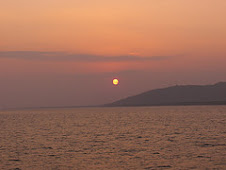
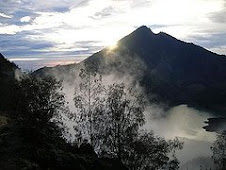
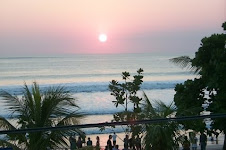
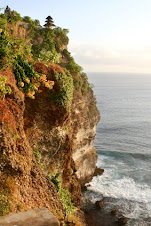
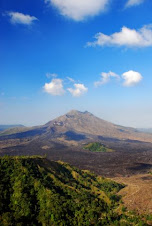
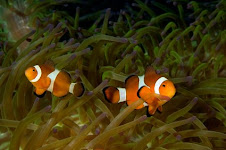

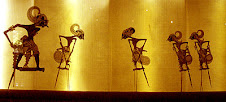


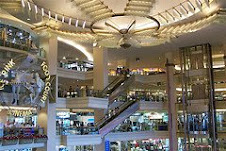
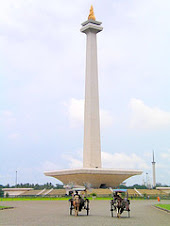
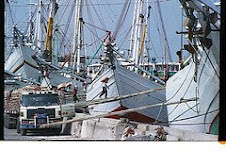
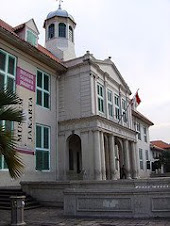
.jpg)

No comments:
Post a Comment